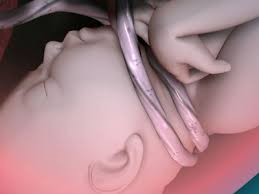Instead of discarding the umbilical cord blood many parents are wise enough to identify it as a bio-investment opportunity. They store the cord blood for the future safety of their baby. Let’s have a glance at the various benefits as well as the negatives of stem cell banking.
Pros of Cord Blood Banking:
The popularity of cord blood banking within a short span of time is the evidence that people have realized its importance. It has the following positive points that stimulate the parents to bank their baby’s cord blood.
Treatment of Critical Diseases
Stem cells are known to cure more than eighty diseases and disorders including cancer, sickle cell anaemia, immune disorders, cerebral palsy etc.
It is even more important for the families with the medical history of diseases since they can be passed genetically.
The first successful sibling-to-sibling transplant using stem cells from the cord blood was performed in 1988. It was to treat a genetic disorder called Fanconi’s anemia.
Easy Extraction
Stem cell preservation benefits include no pain to you or your child during the extraction process. There is no discomfort caused when the blood is extracted from the umbilical cord after the birth.
Alternatively, stem cell collection from the bone marrow collection is an invasive procedure and so requires general anaesthesia.
Autologous Use
Using a person’s own stem cells for his treatment is called autologous treatment. It completely eliminates the chance of Graft versus Host Disease (GvHD), a leading cause of death after bone marrow transplantation.
It happens because the body cells recognize new cells as foreign particles and attack the transplanted cells. Sometimes it is called as graft rejection.
Stem Cell Quality
The stem cells present in the umbilical cord are very new as compared those that are extracted from the bone marrow. Hence freezing your baby’s cord blood means having a resource of higher quality stem cells.
Also since her cord blood stem cells are new they will not be contaminated with any latent viruses. During a transplant, this results in better acceptance by the body than stem cells from bone marrow.
Compatibility with Family Members
If you have banked the cord blood of your baby, and in future any of your family members suffers a serious illness then the banked stem cells of your child are the second best option to treat the diseased person.
The best option is, of course, the autologous transplant. Though there is the possibility of GvHD, the risk is much lower than the bone marrow transplantation since the donor and recipient belong to same family and share common hereditary features.
In fact, your baby’s cord stem cells will not only be a be a perfect lifetime match for her but will also:
- Have a 25% chance of a perfect match or a 50% chance for a partial match for the sibling.
- Using genetically related stem cells, which are not carriers of the disease being treated, result in fewer complications during a transplant.
Research has also shown that transplants using cord blood can be done using a partial match whereas bone marrow transplants require perfect matching. This is because cord blood stem cells can easily reproduce in the host after transplant and are more tolerant of HLA (HumanLeukocyte Antigens) mismatches.
Furthermore, finding a match for bone marrow transplantation is very difficult.
Immediate Availability
Since the stem cells are stored right from birth, they are immediately available if required for your child. Hence, you don’t waste precious time looking for a donor if an emergency transplant is ever required.
Cons of Cord Blood Banking:
Expenses
This is the biggest hurdle for Indians. The simple storage of a cord blood sample costs about 80,000 Rupees. Also banks charge a small fee for annual maintenance. This is much higher than the per capita average annual income of Indians.
Limited Use
There is very low probability that the baby’s stem cells will ever be used for the treatment of family members. The chances are that only 1 in 200 will be requiring it in their lifetime. The probability is even lower that it may ever be used in the treatment of the same baby.
Insufficient Quantity
Cord blood stem cells are used primarily to cure the disease of children and teenagers.
The amount of stem cells obtained from umbilical cord blood is sufficient for transplantation in a person less than 115 pounds in weight. The adults usually weigh more than 115 pounds therefore it is insufficient to transplant into matured adults.
Embryonic Stem Cells are Better
Till recently the benefits of stem cell banking was reserved mainly to treat blood related disorders. Although many studies are in progress, scientists feel that the potential of embryonic stem cells to develop into many different types of cells is much more.
Umbilical Cells won’t Cure All
Stem cells derived from your baby’s umbilical cord will not be able to sure all diseases. This is especially true if your child has a genetic disease. In such cases the stem cells from the umbilical cord will also contain the same genes as your baby’s.
This is where public banks become important. In public banks the stem cells comes from an unrelated donor.
Generic Disorder
During donation of cord blood families are asked about their family history of genetic diseases. The samples are also tested for common genetic diseases such as sickle cell anemia.
Information about diseases that the infant might have is also found out about during the collection of the sample. Despite this some genetic diseases may exist in the cord blood sample.
Cord blood transplantation can expose your child to a rare genetic disorder of the immune system or blood. However, the chances of getting this disorder are less than 1 in 10,000.
This disorder cannot be detected during the testing the cord blood sample. It can remain dormant within your child for many years before it surfaces.
One Time Availability
While cord blood stem cells can save your child from serious diseases, it is available only one time. IN cases of recurrence, a second time availability of it is not possible.
On the other hand, in cases of bone marrow transplants the donor can be asked to donate:
- White blood cells (T-lymphocytes or T-cells) to help fight a recurrence of a disease like leukemia in the patient
- Marrow for the second time if the first one fails to engraft
Though there are certain drawbacks of cord blood banking in India, the rapid growth and scientific research show that these problems can be solved in near future. There is a high possibility of cost reduction as well due to increased competition.






